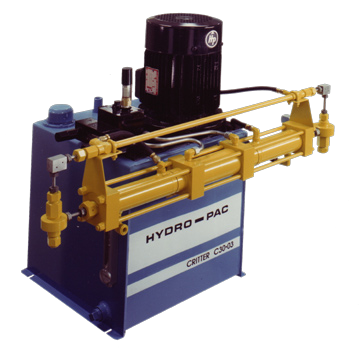
The Li’l CRITTER™ High-Pressure Gas Compressor is used for low capacity production and research applications that require a small flowrate at high pressure. Standard units are available for discharge pressures of 10,000 to 60,000 psig (70 to 415 MPa) in frame sizes of 3, 5 and 7.5 hp (2.3, 3.8 and 5.6 kW).
Two-stage Li’l Critter™ compressors typically operate with inlet pressure ranges of 500 to 3,000 psig. Single-stage compressors operate on an 8:1 compression ratio.
These compressors can be customized for specific pressures, capacities and applications with simple modifications.
Li’l CRITTER™ HIGH-PRESSURE GAS COMPRESSORS
Features
- Oil-free non-lubricated gas pistons.
- Full stroke-length distance pieces isolate the hydraulic drive from the gas cylinders.
- Materials compatible for high pressure operation.
- Hydro-Pac gas compressors work over a wide range of inlet pressures. In many cases inlet pressure regulators are not required.
- Intensifiers are ideally suited for high pressures due to the simple geometry, slow operating speeds and in-line loads.
- Long slow stroke and small dead volume in the compressor cylinders result in high volumetric efficiency.
- Water cooled gas cylinders lower operating temperatures, which increases packing life.
- Hydraulically driven intensifiers allow control of both discharge pressure and gas flow rate by controlling the hydraulic drive. This may be important when matching the flow rate of the compressor to that of a reformer or electrolyzer.
- Gas pressure assists in the compression stroke improving the overall efficiency of the machine.
APPLICATIONS
- Hot isostatic pressing
- Gas leak testing
- Pneumatic testing
- Supercritical extraction
- Shock tube pressurization
- Wind tunnel storage pressurization
- Chemical processing
- Gas transfer and circulation
- Instrument calibration
- High-pressure chemical reactions
- Well injection
- Material testing
- Many other applications that require clean gas.
STANDARD GASES
- Argon
- Nitrogen
- Helium
- Carbon Dioxide
- Dry Air
- Methane and CNG
- Hydrogen
- Ethylene
- Other gases
